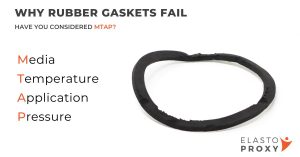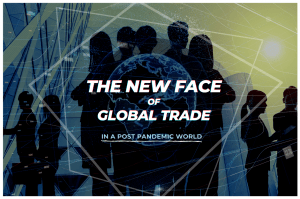Wasted movement in manufacturing was a problem before COVID-19. Motion and transportation that do not add value to products are classic forms of manufacturing waste. Lean manufacturing, a proven methodology for minimizing waste and maximizing productivity, can help. In the age of COVID-19, however, the “new normal” also requires some new thinking. A manufacturer’s ability to protect employees from the pandemic while reducing waste and increasing productivity are all essential for profitability.
How will your business adjust, adapt and innovate when you resume manufacturing? If your company is an “essential business” that never stopped production, is there room for improvement as you cope with COVID-19? You know you need to clean your facility more regularly (and deeply), but cleaning does not add value to your company’s products. Moreover, productivity-killers that were present before the pandemic pose new risks as you seek to maintain physical distancing and overcome supply chain disruptions. How will your ramp-up production and meet pent-up demand during the “new normal”?
Fortunately, there are three ways to stop wasted movement that can also help to protect your most important assets – your employees. Let’s take a look at people, materials and assembly.
#1 People
How will you limit the movement of people in your facility so that you can promote physical distancing? Consider the example of a worker who leaves the assembly line to pick parts from inventory. There is a 15-minute roundtrip to warehouse. There are also three five-minute stops along the way to talk to co-workers. That is 30 minutes of labor time that does not add value to your company’s products. Moreover, the worker who walked the floor and visited friends may have spread or contracted COVID-19. If the parts the employee needed were already on the production line, you could reduce wasted movement and promote safety.
How will you control the movement of people when travel throughout your facility is necessary? Some manufacturers are marking lanes with arrows and installing stop signs at the ends of aisles. During the pandemic, this will promote physical distancing between workers. For facilities that use forklifts, practices like this will enhance worker safety long after COVID-19. Manufacturers want to reduce the risk of accidents, but they also want to use forklifts as efficiently as possible. If all of the parts an assembler needs are packaged in one big box, a driver will not need to make multiple trips to the production area.
#2 Materials
How will you ensure the efficient flow of materials to production? Delivering everything that a worker needs is a good start. A better way is to provide kits of finished parts instead of raw materials. Consider the example of a welder who also makes and installs door and window gaskets. The welder receives rubber coils, but gasket cutting and bonding are not the best use of this metalworker’s time – especially if there is only one welder per shift to minimize the risk of losing all of the company’s welders to COVID-19. A welder who receives a boxed kit with finished door and window gaskets can spend more time working with metal and less time working with rubber.
If the welder works in a work cell, the challenges may be different. For example, there could be another employee who is responsible for cutting and bonding door and window gaskets. The welder and the assembler need to stay six feet apart, but physical distancing in tight spaces can be challenging. Plus, the welder and the assembler may touch many of the same work surfaces, such as tabletops and tools. Cleaning can reduce the risk of infection, but time spent cleaning is time that is not spent on value-added activities. In this case, a kit of custom gaskets that arrive ready-to-install could mean that the assembler does not need to share a worktable and hand tools, thus reducing cleaning time and the risk of infection.
#3 Assembly
How will you promote assembly efficiency in the age of COVID-19? Will productivity suffer if your shifts do not have the normal complement of workers? Delivering all of the materials that assemblers need is a good start. Delivering kits of ready-to-assemble finished parts is even better. The best method of all, however, is to provide all of the finished parts that are needed with these parts packaged in order of assembly. When kitting is combined with custom packaging, parts are stacked inside the box in order of installation. UV parts marking can also add value by labeling parts so that they are easy to identify.
Consider the example of a mobile equipment build. A forklift driver brings a line worker a box of all of the rubber parts that are needed for the cab. Moreover, the box travels right from the receiving dock to the point of assembly. When the worker opens the box, the first part to install – a headliner – is on top. The door and window gaskets are next. The last item to install, the rubber floor mats, are at the bottom of the box. If the manufacturer needs the worker to install engine bay components as well, the kit could contain pre-marked silicone hoses and engine bay insulation. Plus, all of the parts could come from one vendor.
Stop Wasted Movement in Manufacturing
What if you could reduce manufacturing waste and improve productivity while better protecting your employees in the age of COVID-19? Elasto Proxy offers more than just custom-packaged kits of finished rubber products. We provide value-added solutions to business challenges combined with ongoing commitment to your success. To learn how we can help you, contact us.










